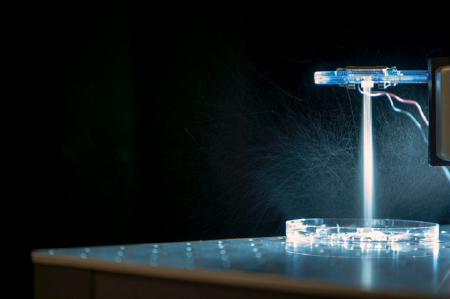Source: wustl.edu Jul 09, 2018 7 years, 5 months, 4 weeks, 2 days, 19 hours, 9 minutes ago
Researchers at Washington University in St. Louis have developed a new technique to deliver genetic material into cells. Called Acoustic Shear Poration (ASP), the method combines ultrasound waves and focused mechanical force to create pores in the cell membrane, allowing genetic material to enter the cell.
Gene therapy holds enormous promise, but getting DNA and RNA to enter cells is a challenge. Some existing methods, including viral vectors, have prompted safety concerns, and so scientists are working to develop new effective methods to get genetic material into cells.
“Non-chemical, non-viral approaches, which take advantage of mechanical or electrical stimuli to overcome cellular barriers to gene transfer, are compelling for many reasons, including safety, cost and the potential (or lack thereof) for large-scale manufacturing of therapeutic cells,” said J. Mark Meacham, a researcher involved in the study. “For such methods to be successful, pores must be created in the cell membrane that are large enough and stay open long enough to insert molecules while not damaging or killing the cell and delivering the molecule to the cell’s nucleus where it can work.”
The ASP system uses a focused mechanical force, such as fluid shear, and ultrasound waves to create pores in the cell membrane. So far, the research team has demonstrated that the system can produce significant levels of transfection, where a DNA molecule is passed into a cell, and transfection rates using ASP showed an approximate 100% improvement when compared with those of another technique called mechanoporation.
The technique involves using an ultrasonic field to pump a cell suspension through a constricted nozzle, generating a significant mechanical force on the cells as they are ejected from the nozzle in a fine spray. This generates pores in the cell membrane of 100-150 nanometers, which are large enough for large payloads to enter the cell.
“We have demonstrated our poration technique using
cancer cell lines and patient-derived, primary monocytes, which is an important achievement, but the end goal is to use the new combined method to successfully modify T cells from a patient’s immune system,” Meacham said. “We would take cells extracted from a patient, run them through our device and modify them, then they would be reintroduced to the patient. That’s the Holy Grail of personalized medicine and emerging gene therapies.”
Study in
Scientific Reports:
Enhanced intracellular delivery via coordinated acoustically driven shear mechanoporation and electrophoretic insertion.
https://source.wustl.edu/2018/02/engineer-develops-enabling-technology-emerging-gene-therapies/
